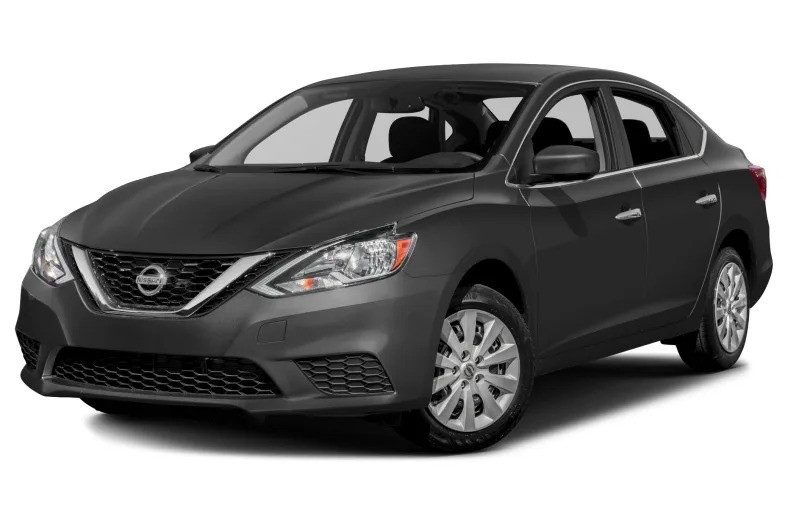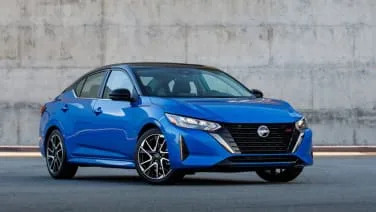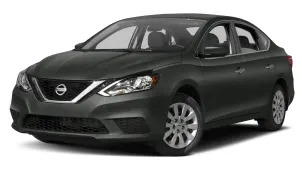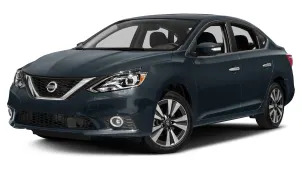2016 Nissan Sentra
You can't fault Nissan for keeping it simple with the Sentra. There's a huge percentage of the population who buy cars as appliances – they want affordable, spacious, well-equipped, safe, efficient cars, and they don't really care about things like dynamism or whatever. It's why Toyota sells over 300,000 Corollas annually, dull as they may be. The 2016 Sentra is an updated version of the seventh-generation sedan that launched a few years ago. Overall, it's no different than its predecessor, with only modest tweaks to an otherwise competent package. It looks better, it's quieter inside, and you can get it with more goodies. It's definitely not the enthusiasts' choice, but in the compact class – and especially for Nissan – that doesn't really matter. The Sentra alone is responsible for 15 percent of Nissan's sales in the United States, and in 2015, 25 percent of the brand's overall growth came from this car. Driving Notes Let's be honest, this isn't a fun car to drive. Don't be fooled by the more aggressive appearance of the SR model here – it's all for show. Every Sentra uses the same chassis tuning, and there's only one engine: a naturally aspirated, 1.8-liter inline-four with 130 horsepower and 126 pound-feet of torque. Only the base S model can be had with a six-speed manual transmission (you'll probably never see one), and the moment you select any options, you're forced into the CVT. Like all modern continuously variable transmissions, the Sentra's setup is relatively well-behaved, and doesn't suffer from the overly buzzy nature of old CVTs. Besides, CVTs are commonplace in the compact class these days, since they're good for fuel economy. Most Sentra models achieve 29 miles per gallon in the city, 38 mpg highway, and 32 combined; the FE+S trim ups those numbers to 30, 40, and 34, respectively. Within the Sentra's competitive set, its fuel economy is right on par with the new Hyundai Elantra and Toyota Corolla, but it does fall short of the Honda Civic's lofty 41-mpg highway claim. How's it drive? Like a Sentra. The retuned suspension is relatively compliant, even over broken, post-winter Michigan roads, but you don't get a lot of feedback through the chassis. Same goes for the steering: it's numb, but nicely weighted, and should be fine for normal Sentra activities like traversing parking lots at rental car offices, high schools, and shopping malls. Nissan made incremental changes to the Sentra's steering and suspension setups, and the result is a car that's only incrementally better to drive. We'd rather steer a Focus, Civic, or Mazda3, of course, but the Sentra falls somewhere around the Corolla/Elantra/Cruze set. This is a much quieter car for 2016. Little things like more sound-deadening material and remapped CVT programming to keep it revving lower mean there's less noise inside the cabin. It's not Lexus quiet or anything, but the inside of the Sentra is surprisingly hushed. Speaking of the interior, it's the same as it ever was. The seats are …
Full Review
You can't fault Nissan for keeping it simple with the Sentra. There's a huge percentage of the population who buy cars as appliances – they want affordable, spacious, well-equipped, safe, efficient cars, and they don't really care about things like dynamism or whatever. It's why Toyota sells over 300,000 Corollas annually, dull as they may be. The 2016 Sentra is an updated version of the seventh-generation sedan that launched a few years ago. Overall, it's no different than its predecessor, with only modest tweaks to an otherwise competent package. It looks better, it's quieter inside, and you can get it with more goodies. It's definitely not the enthusiasts' choice, but in the compact class – and especially for Nissan – that doesn't really matter. The Sentra alone is responsible for 15 percent of Nissan's sales in the United States, and in 2015, 25 percent of the brand's overall growth came from this car. Driving Notes Let's be honest, this isn't a fun car to drive. Don't be fooled by the more aggressive appearance of the SR model here – it's all for show. Every Sentra uses the same chassis tuning, and there's only one engine: a naturally aspirated, 1.8-liter inline-four with 130 horsepower and 126 pound-feet of torque. Only the base S model can be had with a six-speed manual transmission (you'll probably never see one), and the moment you select any options, you're forced into the CVT. Like all modern continuously variable transmissions, the Sentra's setup is relatively well-behaved, and doesn't suffer from the overly buzzy nature of old CVTs. Besides, CVTs are commonplace in the compact class these days, since they're good for fuel economy. Most Sentra models achieve 29 miles per gallon in the city, 38 mpg highway, and 32 combined; the FE+S trim ups those numbers to 30, 40, and 34, respectively. Within the Sentra's competitive set, its fuel economy is right on par with the new Hyundai Elantra and Toyota Corolla, but it does fall short of the Honda Civic's lofty 41-mpg highway claim. How's it drive? Like a Sentra. The retuned suspension is relatively compliant, even over broken, post-winter Michigan roads, but you don't get a lot of feedback through the chassis. Same goes for the steering: it's numb, but nicely weighted, and should be fine for normal Sentra activities like traversing parking lots at rental car offices, high schools, and shopping malls. Nissan made incremental changes to the Sentra's steering and suspension setups, and the result is a car that's only incrementally better to drive. We'd rather steer a Focus, Civic, or Mazda3, of course, but the Sentra falls somewhere around the Corolla/Elantra/Cruze set. This is a much quieter car for 2016. Little things like more sound-deadening material and remapped CVT programming to keep it revving lower mean there's less noise inside the cabin. It's not Lexus quiet or anything, but the inside of the Sentra is surprisingly hushed. Speaking of the interior, it's the same as it ever was. The seats are …
Hide Full Review
Hide Full Review
Retail Price
$16,780 - $22,170
MSRP / Window Sticker Price
| Engine | 1.8L I-4 |
| MPG | Up to 30 city / 40 highway |
| Seating | 5 Passengers |
| Transmission | 6-spd man w/OD, Xtronic 2-spd CVT w/OD |
| Power | 130 @ 6000 rpm |
| Drivetrain | front-wheel |
| Curb Weight | 2,848 - 2,943 lbs |
Smart Buy Program is powered by 








